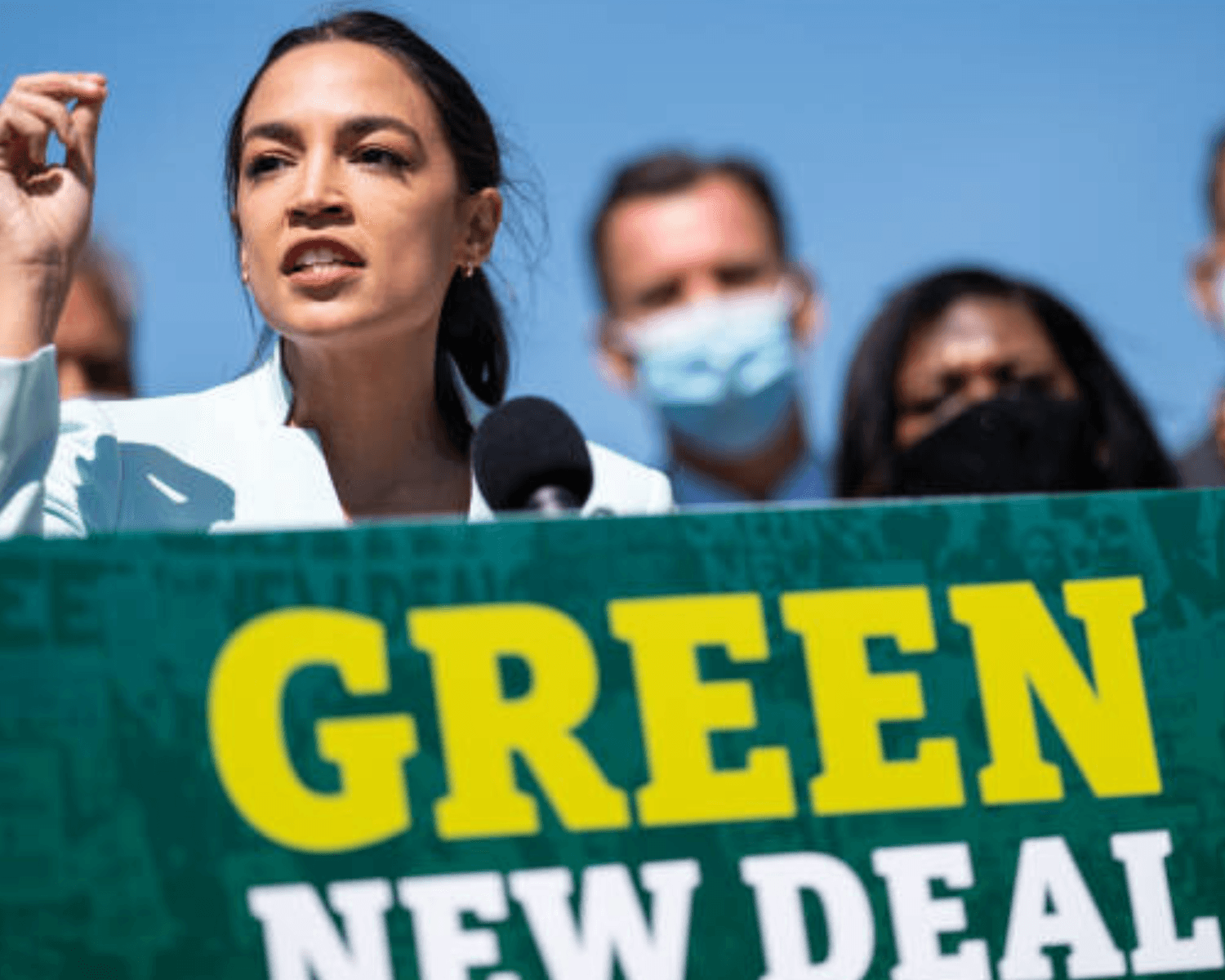
The Green New Deal was proposed on February 7 by Rep. Alexandria Ocasio-Cortez of New York and Sen. Ed Markey of Massachusetts in the Senate.

The Green New Deal is an idea for how the United States may combat climate change during the following ten years. High-paying employment would be produced, and vulnerable communities would be safeguarded. This kind of legislation, in contrast to a bill, is not delivered to the president and cannot become law. Despite recommending any such prohibitions, the resolution does address some of the concerns put up by detractors.
The majority of the discussion in reaction to the proposal has been on specifics that are absent from the resolution language.
For instance, on February 9, President Donald Trump tweeted that the proposal would "permanently remove all planes, cars, cows, oil, gas, and the military."
Here, we clarify what the Green New Deal does and doesn't cover as well as the reasons why some of its provisions are unclear.
What are the objectives of this decree?
The Green New Deal is partially based on Franklin D. Roosevelt's New Deal, a sizable federal initiative intended to stabilize the economy and aid in the Great Depression's recovery. The Green New Deal prioritizes combating climate change but goes beyond merely lowering emissions.
According to the resolution, a 10-year mobilization effort should focus on accomplishing the following five objectives:
To achieve net-zero greenhouse gas emissions, a fair and just transition must be made for all workers and communities.
Provide all Americans with wealth and economic security by creating millions of decent, high-paying jobs.
To sustainably tackle the challenges of the twenty-first century, invest in American business and infrastructure.
Clean air and water, a sustainable environment, good food, access to nature, and community resiliency will all be guaranteed for future generations of Americans.
Stopping current oppression, preventing future oppression, and repairing historical oppression of native peoples, communities of color, migrant communities, deindustrialized communities, depopulated rural communities, the poor, low-income workers, women, the elderly, the unhoused, people with disabilities, and youth will promote justice and equity.
The main objective is to achieve net-zero greenhouse gas emissions within ten years. This is a little less ambitious than asking for zero emissions of greenhouse gases. The resolution makes no mention of how the nation would accomplish these broad objectives.
Let’s go through some of the particular issues that have drawn the most interest.
Electricity:
According to the Green New Deal, all of the country's energy needs would be satisfied "via clean, renewable, and emission-free energy sources." Other than stating that this would involve "dramatically increasing and improving renewable power sources," the resolution doesn't provide any other information.

In a FAQ document that was made public by the Ocasio office, Cortez it was stated clearly that new nuclear facilities would not be allowed.
Transportation:
One of the most crucial sectors where emissions reductions must take place if the nation is to attain net-zero emissions in ten years is transportation. The industry with the greatest greenhouse gas emissions just overtook electricity generation. The U.S. total is accounted for by transportation to the tune of around 28%. The Green New Deal suggests using high-speed rail and zero-emission cars to cut down on transportation emissions. Some memes claim that the proposal supports constructing "trains across the oceans."

Agriculture:
Agriculture is the Green New Deal's third primary industrial goal. Agricultural practices, such as the production of nitrous oxide from soil and methane from cattle, are responsible for around 9% of the nation's greenhouse gas emissions.
The Green New Deal resolution's agriculture section is ambiguous and makes no mention of cows. To "reduce pollutants and greenhouse gas emissions from the agriculture sector as much as is technologically practicable," the resolution asks for collaboration with farmers and ranchers.
Cows are one of several animals whose digestion of food results in the release of methane. Over a century, methane is roughly 28 times more powerful than carbon dioxide. More than a quarter of all methane emissions and almost a third of the greenhouse gas emissions from agriculture in the U.S. come from cattle.

Financial Stability:
In addition to its environmental objectives, the Green New Deal seeks to give Americans economic stability.
The Green New Deal, proposed by Rep. Alexandria Ocasio-Cortez, aims to "create millions of decent, high-wage employment and promote prosperity and economic stability for all citizens of the United States".

By the plan, everyone in the US is entitled to "a job with a family-sustaining income, enough family and medical leave, paid vacations, and retirement security". The idea of supporting those who are "unwilling to work" is not included in the proposal.
Military:
The military would be "permanently eliminated" under Rep. Alexandria Ocasio-Green Cortez's New Deal. But neither the resolution nor any FAQs from her office make any mention of the military. Where did the concept originate? The White House was unable to offer an official justification.
The two plans, despite some similarities, are different and shouldn't be confused.

